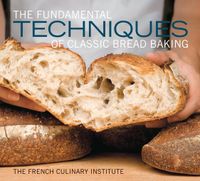Advertisement
Endosperm
Appears in
This large, inner component of the kernel just beneath the bran layer and surrounding the germ comprises about 83 percent of the kernel’s weight. Endosperm is composed of starch granules that are entangled in a matrix of gluten-forming proteins, so it needs to be softened during the milling process so that it may easily be reduced to small particles.
Both the milling and refining of wheat flours are carried out with various objectives; in addition, flours are frequently treated, either chemically or by other means, to improve their inherent properties and nutritional value. During milling, for instance, different “streams” of flour—varying in their starch-to-protein ratios—might be removed for another use. To further illustrate this process, if you begin with 100 pounds of grain, after milling you will be left with 72 pounds of straight flour. This straight flour is referred to as having a 72 percent extraction rate. The remaining 28 pounds is the bran and the germ, which can, if desired, be added back to the straight flour in designated amounts to create whole wheat flour. Because European wheat is traditionally lower in protein content (softer) than American wheat and contains more bran and germ, most European flours have a 75 to 78 percent extraction rate.


